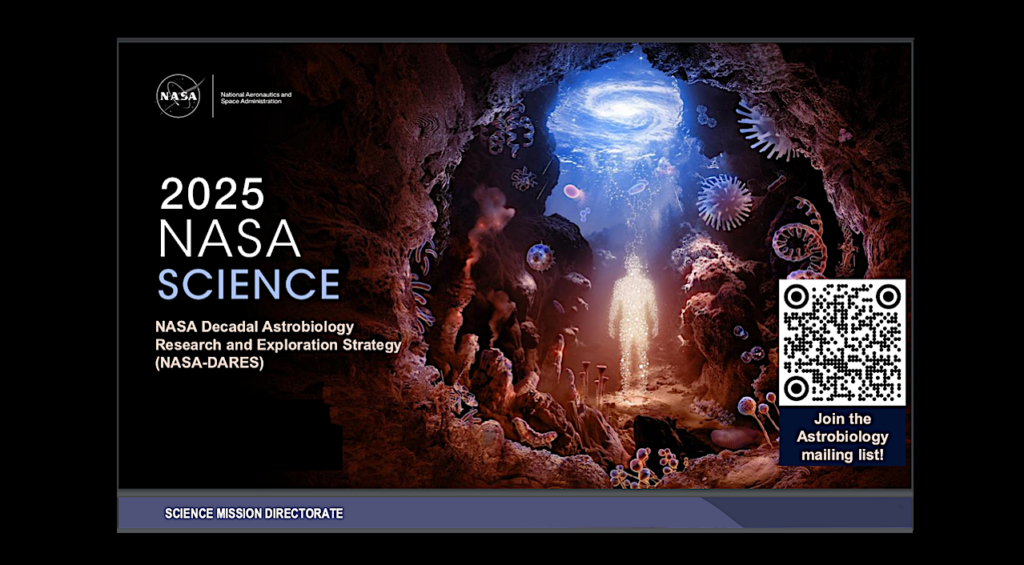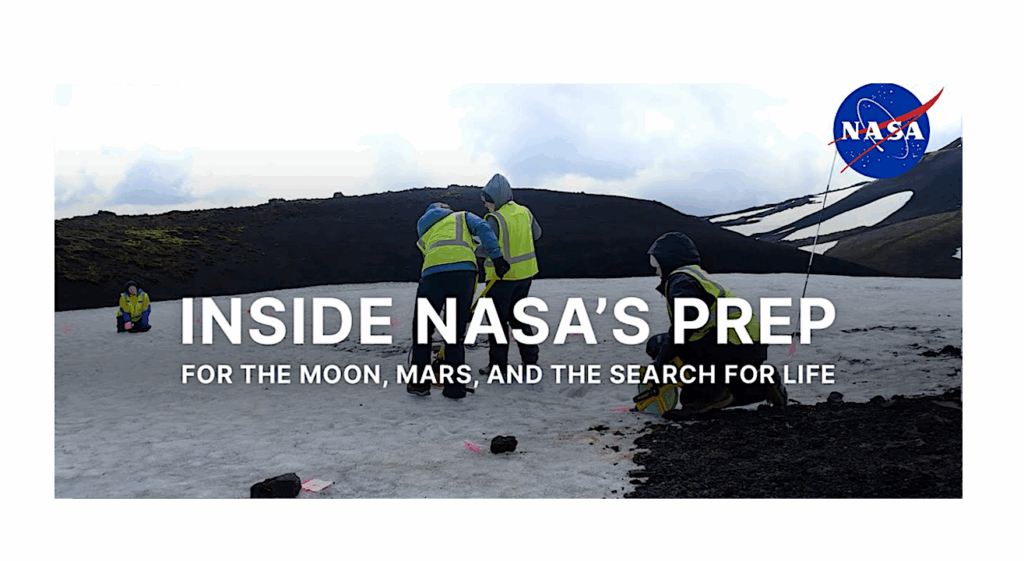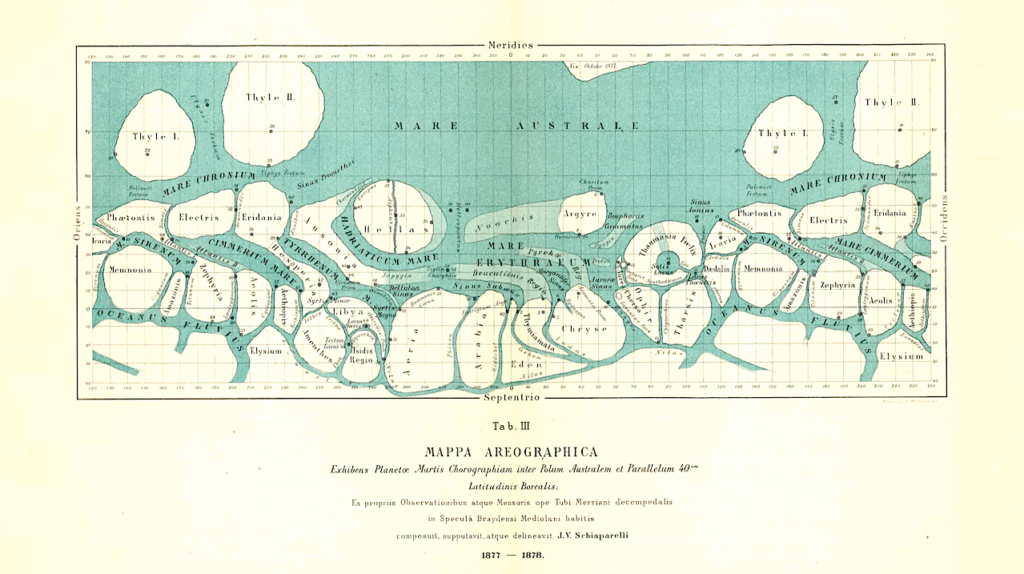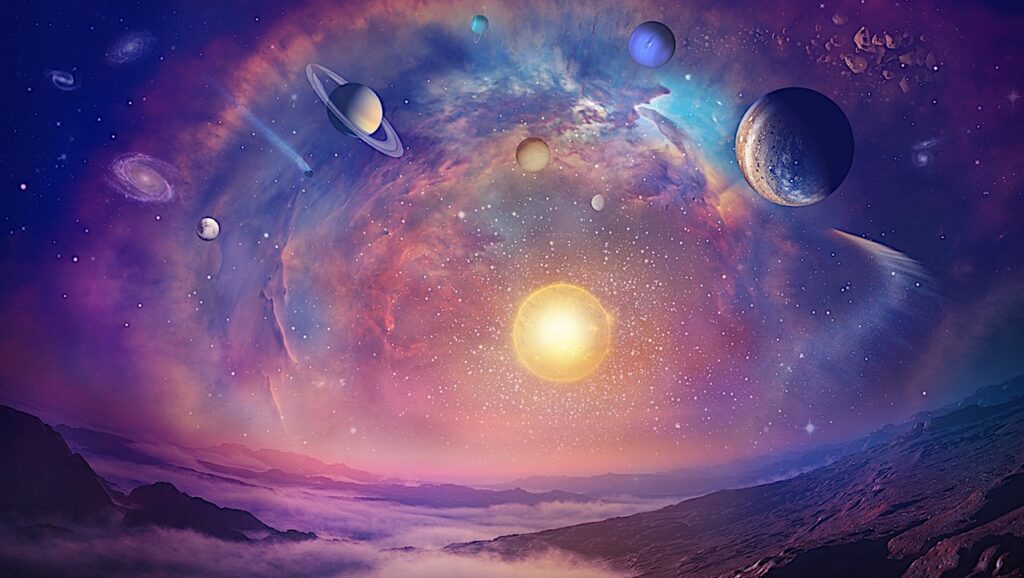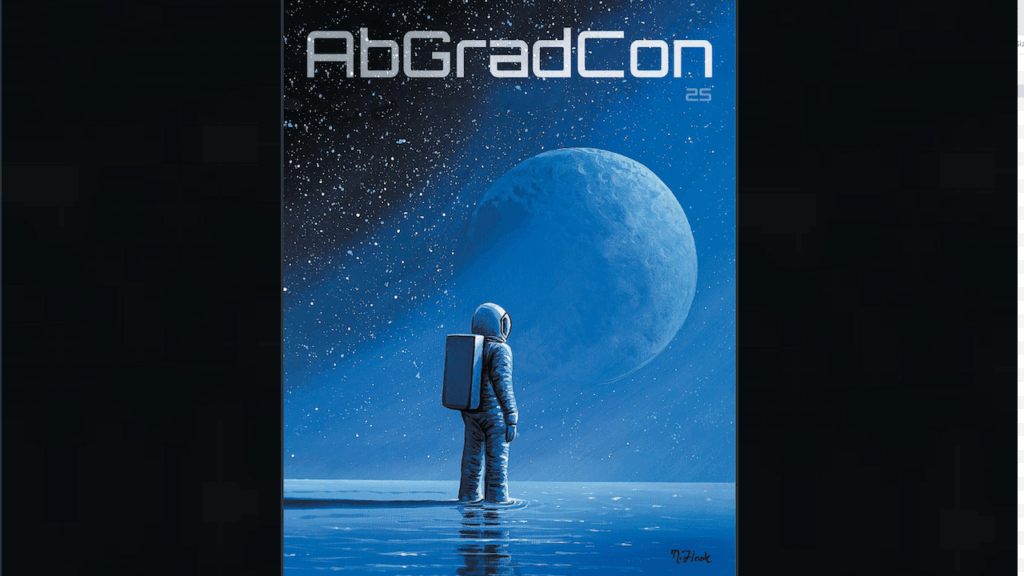NASA Astrobiology Institute Newsletter December 2008
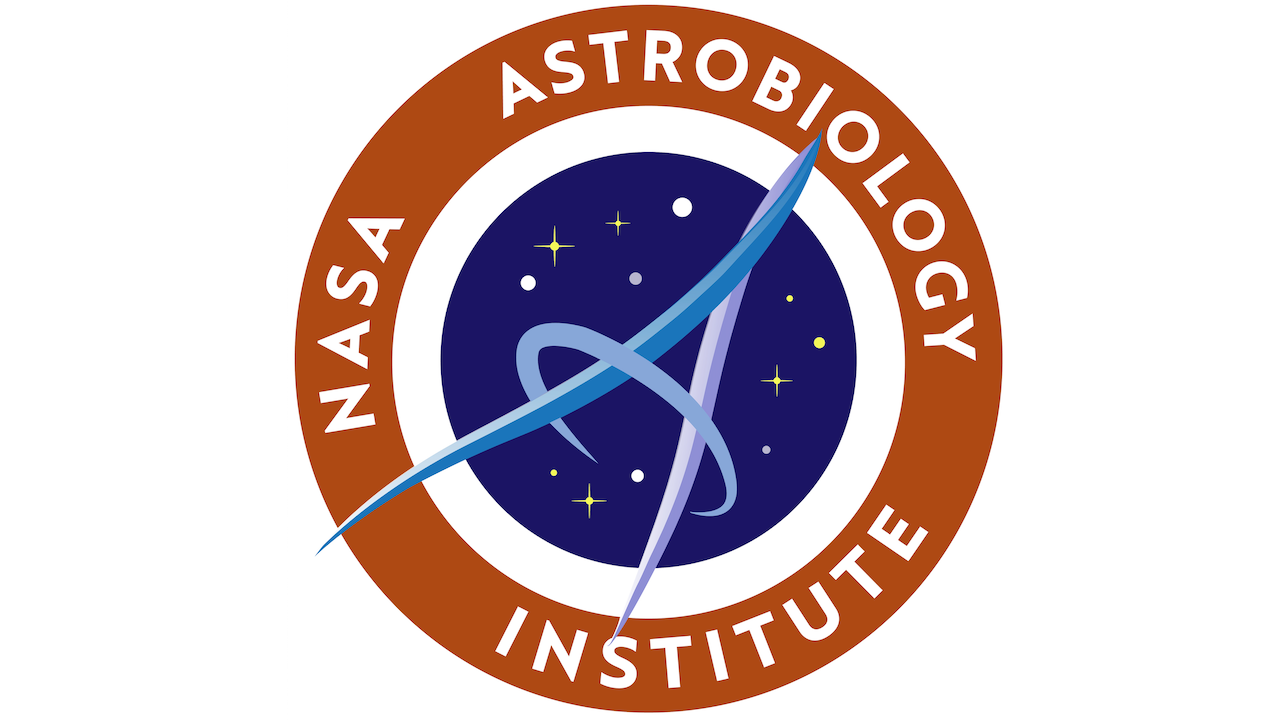
Extreme Science on Earth’s Highest Lakes
This past October 29th, Nathalie Cabrol of NASA Ames Research Center and her team traveled to the highest volcanic lakes in the world to continue her work on the NAI-funded High Lakes Project (HLP). At this time, in the 6th year of the project, the team is, right now, busy collecting data to characterize the response of these lakes to climate variability in one of the best terrestrial environmental analogs to early Mars.
To share in the ongoing adventure, see this project’s blog, read up on the science and enjoy some great pictures, visit the project website at http://cabrol.seti.org/HLP2008/HLP2008.html
Source: NAI Newsletter
New NAI Team at RPI Launches New York Center for Astrobiology
In January, NAI will welcome ten new teams, one of which is based at the Rensselaer Polytechnic Institute in Troy, NY. A gala event was held at RPI to launch their New York Center for Astrobiology, led by RPI Professor Doug Whittet. The opening ceremonies were highlighted by Shirley Ann Jackson, president of Rensselaer and professor of physics, and Paul Tonko, United States Congressman-Elect of New York.
Based within the School of Science at Rensselaer, the New York Center for Astrobiology is devoted to investigating the origins of life on Earth and the conditions that lead to the formation of habitable planets in our own and other solar systems. The center includes researchers and students from a variety of research backgrounds and universities, including regional partners at the University at Albany and Syracuse University, and national partners at the University of South Dakota and the University of Arizona.
“The New York Center for Astrobiology builds on a legacy of discovery and collaboration developed over the past half century by NASA and scientists around the world, including right here at Rensselaer,” said Rensselaer President Shirley Ann Jackson. “The scientists in the center will help piece together the fragmented clues that could lead to the discovery of the first extraterrestrial life, and the origins of the first life to appear here on Earth.”
For more information: http://www.origins.rpi.edu/
Source: NAI Newsletter
FAR Seminar: Habitability
Date/Time: Monday, January 12, 2009 11:00AM Pacific
Join us for the next FAR Seminar! The topic for this seminar is “Habitability” Please see http://astrobiology.nasa.gov/event/habitability-seminar/ for more information and participation instructions.
Source: NAI Newsletter
New Astrobiology Careers Section Added to NAI Website
The Astrobiology Careers page is a compilation of career opportunities available to astrobiologists. It is available at http://astrobiology.nasa.gov/nai/careers/ If you would like to add an opportunity to this page, please email Estelle Dodson at [email protected]
Source: NAI Newsletter
Recently Published Research from the NAI
Carbon Dioxide Discovered on Extrasolar Planet
The discovery of CO2 in the atmosphere of extrasolar planet HD 189733b was announced in the November 21, 2008 issue of Nature News. The exoplanet is a hot Jupiter orbiting a star 63 light years from Earth. While it’s extremely unlikely that this particular planet supports life as we know it, the ability to measure the presence of CO2 in its atmosphere bolsters the search for life outside the Solar System. Giovanna Tinetti, former NAI Postdoctoral Fellow, is lead author in the study which used the NICMOS instrument onboard the Hubble Space Telescope to make the measurement. The results were announced in Paris this week at the Molecules in the Atmospheres of Extrasolar Planets workshop, and will be published in the Astrophysical Journal.
Source: NAI Newsletter
For Students and Young Investigators
NAI – Nordic Summer School: “Water, Ice and the Origin of Life in the Universe”
Iceland, 29 June to 13 July 2009
The NASA Astrobiology Institute and the Nordic Astrobiology Network will conduct a summer school on the role of water in the evolution of life in the cosmos – in Iceland on the above dates. The school is intended for students and post-docs in astrobiology-related subjects (biology, chemistry, physics, astronomy, geosciences etc.) The school will be organized in three sections:
- An introductory lecture course
- Excursions to several places in Iceland of astrobiological interest (hot springs, glaciers, geysers, Mars-like environments)
- A lab course on the geochemistry and extremophile community of hot springs (no previous experience in microbiological lab work and field research needed)
The school will be able to accept around 40 students. Those accepted from the US and the Nordic countries (including the Baltic States and Northwestern Russia) will be provided lodging, meals, study material and the complete excursion and teaching programme without charge as well as some reimbursement for travel expenses. Some funding is also available for a limited number of participants from other countries. Participants from Europe will be awarded 4 ECTS points for the summer school; formal course credit may also be available for US students.
Further information about the summer school and application instructions are available on-line at http://www.nordicastrobiology.net/iceland2009
Source: NAI Newsletter
AbGradCon 2009
The next Astrobiology Graduate Student Conference (AbGradCon) will be held July 17 – 20 2009 at the University of Washington in Seattle. The primary objective of AbGradCon is to improve the future of astrobiology research by bringing together in a unique setting the early-career astrobiologists (graduate students and post-doctoral fellows within 2 years of finishing their Ph.D.) who will lead such research in the years to come. The conference is unique in that it is a student-led meeting, from the organization to the presentations. AbGradCon strives to remove the “pressures” of typical scientific meetings by providing a relaxed atmosphere in which presentations and round-table discussions are fostered along with numerous social activities. AbGradCon will also be hosted in the virtual world of Second Life at the NASA CoLab Sun Amphitheater.
For more information: http://tinyurl.com/abgradcon09
Source: NAI Newsletter
2009 Research Experiences for Undergraduates (REU) Program in Astrobiology
The SETI Institute is pleased to announce that applications are now open for the 2009 REU (Research Experiences for Undergraduates) program in Astrobiology. Undergraduate students in fields such as astronomy, biology, geology, chemistry, and physics are invited to apply to spend 10 weeks in the San Francisco Bay area working on a scientific research project in the field of astrobiology. Students receive a stipend, travel, and living expenses. Applications are due by February 2, 2009.
For more information, visit http://www.seti.org/reu or contact Cynthia Phillips, [email protected], 650-810-0230.
Source: NAI Newsletter
NASA Ames Academy for Space Exploration
The Academy is a summer research internship that focuses on leadership, team building, and conducting applied research with NASA scientists in science, information technology and engineering. The program is a 10 week immersive summer internship for undergraduate juniors, seniors and first year graduate students. The internship includes a stipend from the State Space Grant Office up to $5000, housing, food stipend, transportation and travel expenses.
An abstract of each project at NASA Ames Research Center is available at http://academy.arc.nasa.gov/. Applications will be accepted through January 26, 2009.
Source: NAI Newsletter
Student Opportunities at NASA Centers
Many opportunities and programs are available to students at NASA Centers. For more information about these opportunities, please see: http://astrobiology.nasa.gov/nai/careers/student-opportunities-centers
Source: NAI Newsletter
Education and Public Outreach
ROSES-08 Amendment 33: Additional Proposal Opportunity for ROSES Education and Public Outreach Supplemental Awards
This amendment announces an additional proposal opportunity for Education and Public Outreach supplemental awards. Principal Investigators (PIs) of selected Science Mission Directorate (SMD) research investigations may propose for Education or Outreach awards as supplements to their research award. Two different pathways are offered: $15K education pathway proposals and $10K outreach pathway proposals.
These proposal opportunities are described in Appendix E.8: Supplemental Outreach Awards for ROSES Investigators and Appendix E.9: Supplemental Education Awards for ROSES Investigators. The text in Appendix E.8 and Appendix E.9 has also been revised and clarified in response to questions submitted by the community.
Notices of Intent (NOIs) to propose for supplemental E/PO awards are due March 11, 2009. Proposals for supplemental E/PO awards are due April 8, 2009.
On or about December 16, 2008, this Amendment to the NASA Research Announcement “Research Opportunities in Space and Earth Sciences (ROSES) 2008” (NNH08ZDA001N) will be posted on the NASA research opportunity homepage at http://nspires.nasaprs.com/ (select “Solicitations” then “Open Solicitations” then “NNH08ZDA001N”).
Questions concerning the Supplemental Education/Outreach Awards for ROSES Investigators may be addressed to Dr. Larry P. Cooper, Science Mission Directorate, NASA Headquarters, Washington, DC 20546-0001; Tel: 202-358-1531; E-mail: [email protected].
Source: NAI Newsletter
For the Astrobiology Community
ROSES-08 Amendment 32: Final text for Moon and Mars Analog Mission Activities (MMAMA)
This amendment replaces the draft text in Appendix C.24 entitled “Moon and Mars Analog Mission Activities” with the final text. NASA Moon and Mars Analog Mission Activities (MMAMA) research addresses the need for integrated interdisciplinary field experiments as an integral part of preparation for planned human and robotic missions to the Moon and Mars. The focus of this program is on providing high-fidelity scientific investigations, scientific input, and science operations constraints in the context of planetary field campaigns. Funding provided in this program element is intended to enable researchers to conduct scientific investigations and integrate their instruments, projects, and/or protocols into field activities designed to help NASA plan for future exploration of the Moon, Mars, and other planetary bodies with both robots and humans.
Notices of Intent to propose (NOIs) are due January 16, 2009, and proposals are due February 20, 2009.
On or about December 11, 2008, this Amendment to the NASA Research Announcement “Research Opportunities in Space and Earth Sciences (ROSES) 2008” (NNH08ZDA001N) will be posted on the NASA research opportunity homepage at http://nspires.nasaprs.com/ (select “Solicitations” then “Open Solicitations” then “NNH08ZDA001N”).
Further information about this program element is available from Dr. Jennifer Heldmann, Planetary Science Division, Science Mission Directorate, National Aeronautics and Space Administration, Washington, DC 20546-0001; Telephone: (202) 358-2302; Email: [email protected].
Source: NAI Newsletter
Senior Staff Scientist Position at the Lunar and Planetary Institute
The Universities Space Research Association’s Lunar and Planetary Institute (LPI) in Houston, Texas, is accepting applications for the position of Senior Staff Scientist. The successful applicant will perform outstanding basic scientific research in the lunar and planetary sciences, attract funding for their personal research activities, present research results in publications in refereed journals and at conferences, likely have an active role in space missions, participate in the academic community for his/her field, support NASA through activities on committees and panels, and contribute to the dissemination of lunar and planetary science information throughout the academic community and to the general public. He/she will have mentoring roles for junior scientists, postdoctoral fellows, university as well as school-age students, and will work to identify, pursue and secure new funding opportunities for the Institute and for USRA.
Applicants must have a Ph.D. in a planetary sciences or geosciences-related field and at least 10 years of experience in scientific research beyond the Ph.D. Applications will be accepted in any area of the planetary sciences, although preference may be given to research that enhances the interactions between LPI and the Astromaterials Research Group at the NASA Johnson Space Center (JSC). The successful candidate must be able to communicate effectively in oral and written formats, including presentations to the scientific research community, and government representatives. He/she must bring strong connections to and reputation with NASA and the scientific community.
Applicants should send a letter of interest, a Curriculum Vita with list of relevant publications, a brief (maximum three pages) 5-year research plan, and a list of three references. Please e-mail your application materials to [email protected] or fax to 281-486-2173. These materials must be received by January 16, 2009.
For more information: http://www.lpi.usra.edu/lpi/positions.shtml
Source: NAI Newsletter
Solar-Extrasolar Meeting to be held as NASA Ames Research Center
Dates: February 4-6, 2009
Location: NASA Ames Research Center
Reconciling observations of extrasolar planets with those of the solar system will engage the efforts of planetary formation observers and theorists for the foreseeable future. The aim of this meeting is to promote cross-fertilization between the extrasolar and the solar planetary communities. The topics will include both theoretical and observational characterization of protostars and planets. The emphasis of the meeting will be to compare and contrast planetary systems. Ideally, constraints derived from diverse planetary systems will be complementary; yet, the extent to which such systems can be viewed under a common prism remains to be clarified.
On the first day, the meeting will address the stellar environment during planet formation. On the second, invited talks will touch on extrasolar planets and planet formation. The third day will cover solar system talks.
For more information: http://www.seti.org/planetformation
Source: NAI Newsletter
Collaborative Technologies
Scientific Problem-Solving Benefits from Open Collaboration
Combine prize-driven innovation with the vast communication capability of the web and what do you get? Solutions. A July 22, 2008 New York Times article, If You Have a Problem, Ask Everyone, reports that “open source science” is catching on, and cites success stories that show that the technique has promise. One example of a successful problem-solver is John Davis, a chemist who knows all about concrete and techniques to keep it vibrating so that it won’t set up before it can be used. Mr. Davis applied his knowledge to a seemingly unrelated problem when he figured out that devices used for vibrating concrete can be adapted to keep oil in Alaskan storage tanks from freezing. He was paid $20,000 for his idea.
The website Innocentive.com offers a venue for matchmaking between those with a difficult problem to solve and a community of over 80,000 “solvers” worldwide. A study published on the Harvard Business School Forum, The Value of Openness in Scientific Problem Solving by Karim R. Lakhani and colleagues used Innocentive.com to broadcast information about 166 scientific problems that well-known R&D-intensive firms had been unable to solve internally. Opening the problem to a large community of scientists, they found that one-third of the problems were solved, and–surprisingly–the farther the self-assessed distance between the problem and the solver’s field of expertise, the more likely they were to submit a winning solution. The authors attribute this result to the ability of an “outsider” to see a problem afresh, and to apply solutions commonly used in their own discipline in new and innovative ways in the problem domain. They note that this is consistent with studies of idea-generation in science, where it has been found that researchers outside of a community often bring novel ideas to the table.
Source: NAI Newsletter


